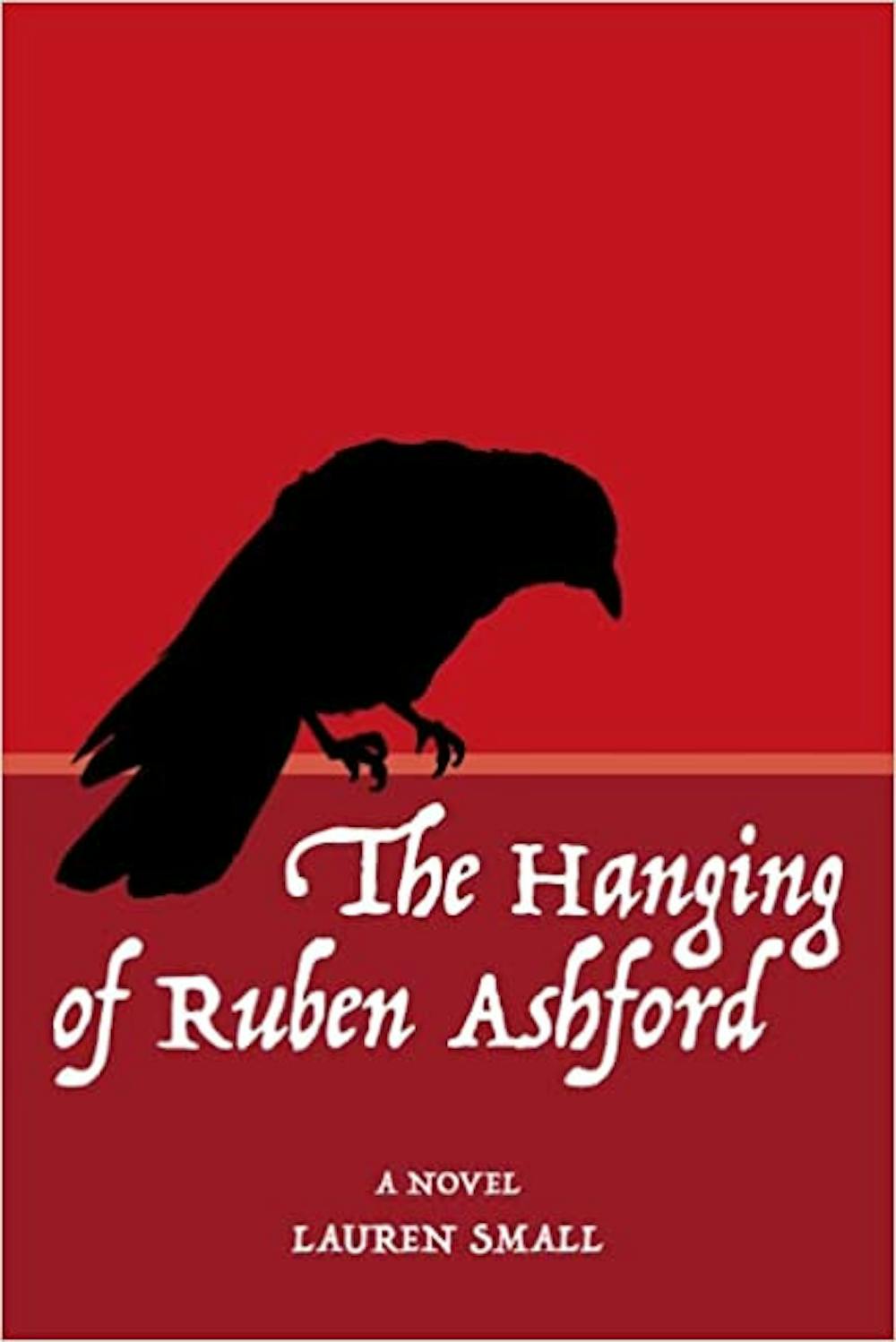With most of the attendees still in their work clothes and sporting a “Hopkins Medicine” badge reel, a spectator may have assumed they were gathering for a presentation on the latest medical research. The table of wine and cheese, however, suggested otherwise.
On Nov. 9, Lauren Small held a reading of her new novel The Hanging of Ruben Ashford at Hopkins Hospital. As a part of the AfterWards program in Narrative Medicine, the event represents a push for Hopkins to emphasize the humanities in medical education in an effort to help providers understand their patients.
Small is an assistant professor at Hopkins Hospital. While a large proportion of medical doctors in the room, her doctorate is in comparative literature.
Small is the daughter of physicians, and her husband and daughter are physicians as well. At the opening of the event, Small commented on the connections she sees between medicine and storytelling.
“Medical care takes place in the context of stories,“ she said. “So if you’re a clinician, there are the stories patients tell you, there are stories you share with your colleagues, and maybe most importantly, there are the stories you tell yourself about the work that you’re doing.”
Small runs AfterWards, a program where healthcare providers can meet outside of their shift to discuss a piece of literature or art, ranging from Frida Kahlo paintings to Kendrick Lamar music videos. After a group discussion, participants write their own personal narratives based on their experiences with the piece’s theme.
This meeting of AfterWards focused on Small’s own piece of work, recently published by the local nonprofit press Brick House Books.
The Hanging of Ruben Ashford follows a female couple during the 1918 influenza epidemic in Baltimore, where the death rate was the highest in the country at the epidemic’s peak. Josie Berenson, a psychology researcher at the Phipps Psychiatric Clinic, works to defend a Black man accused of murdering a white woman. Meanwhile, her partner Dr. Nell Winters runs a medical practice struggling to treat the influx of influenza patients on the first floor of her home in Bolton Hill.
Audience members remarked that the story seemed reminiscent of the COVID-19 pandemic in Baltimore. At one point in the reading, the character of Josie expresses her frustration that the city’s health commissioner refuses to limit public gatherings, instead opting to let political rallies and parades continue. The scene parallels Donald Trump’s anti-lockdown policy and controversial rallies during the COVID-19 pandemic.
While Small acknowledged the resemblance of her pandemic narrative to COVID-19, she noted that the book was finished in 2019, before the pandemic started.
“There’s an old saying that they tell writers: ‘Be careful what you write because it just might come true,’” she said.
Small specified that she was prompted to write the novel after the murder of Freddie Grey by police officers in 2015, the uprisings and social unrest in Baltimore that followed and the election of Donald Trump in 2016.
“Originally, I was going to write about Baltimore in 2015 and Freddie Grey, but the way my mind works I was immediately like ‘Well where does that come from?,’” she said. “I ended up going back a hundred years to a pivotal time in Baltimore history.”
The novel makes several references to the University’s history during the influenza pandemic. Josie’s character works for Adolf Meyer, a Hopkins psychiatrist known for founding the Phipps Clinic, which was one of the first psychiatric institutions embedded in a medical hospital.
Clarinda Hariss, the editor-in-chief of Brick House Books (BhB) and an event attendee, commented on Small’s decision to depict a female couple in 1918 at the center of the story. Hariss recalled the Cone sisters as another example of how female companionship in general was an accepted part of society in the 20th century.
“I also felt it remarkable that you had precedent in so many ways… women choosing to live with other women under often very platonic circumstances and often not, was very much a part of normal society in Baltimore and elsewhere,” Hariss said.
Small responded with her own reflection on the decision, stating it was based on research of the decisions many career-minded women had to make during the time period.
“It was hard to pursue a career if you were married, because if you were married you were expected to be domestic. [These women] often would not marry, but at the same time they wanted to have love in their life, they wanted companionship. They often formed very strong attachments to other women, similar to themselves. And these were sometimes platonic and sometimes not, and no one even necessarily knew or would talk about it,” Small said.
In an interview with The News-Letter, Harriss noted her satisfaction with the event and the audience’s engagement with the reading.
“I was genuinely stunned by the size and intense interest of the crowd at the event,” she said. “Dr. Small not only writes narrative but also uses her stories and other people’s stories to reach people. What I didn’t realize was that her audience would understand her words on so many levels. I regard the novel and the strong, visible response at the event as quite possibly the most remarkable moment in [Brick House Book]‘s five-decade history.”
While The Hanging of Ruben Ashford was being prepared for publication, Small wrote another novel based on the Nuremberg trials. She is currently also drafting a novel on the first Crusades.
In an interview with The News-Letter, Small noted how she often uses historical fiction to explore modern social issues. For example, she is currently using the Crusades to explore her perception of white Christian nationalism.
“I take what I see in the present and I look for the roots of it,” she said.
The Hanging of Ruben Ashford is available through Itasca Books and Independent Booksellers. Readers can request copies from Amazon and Barnes and Noble.





